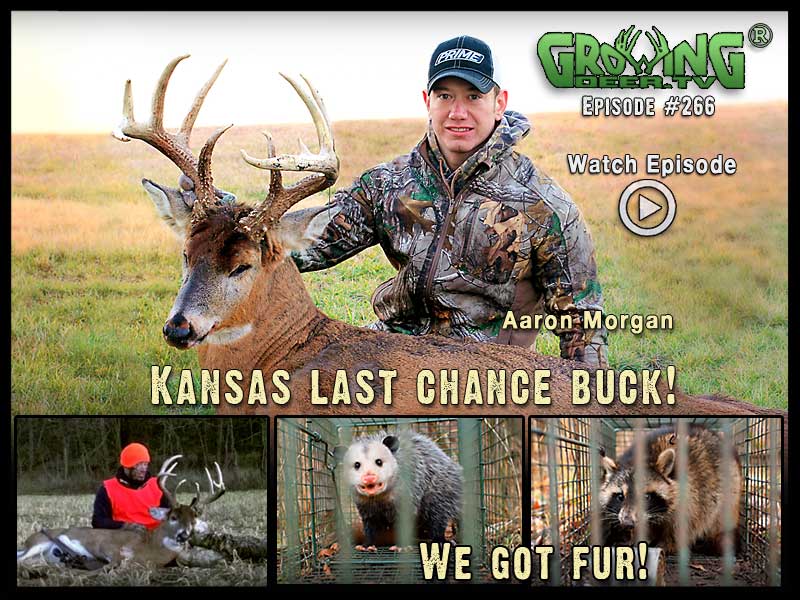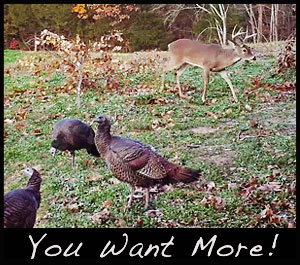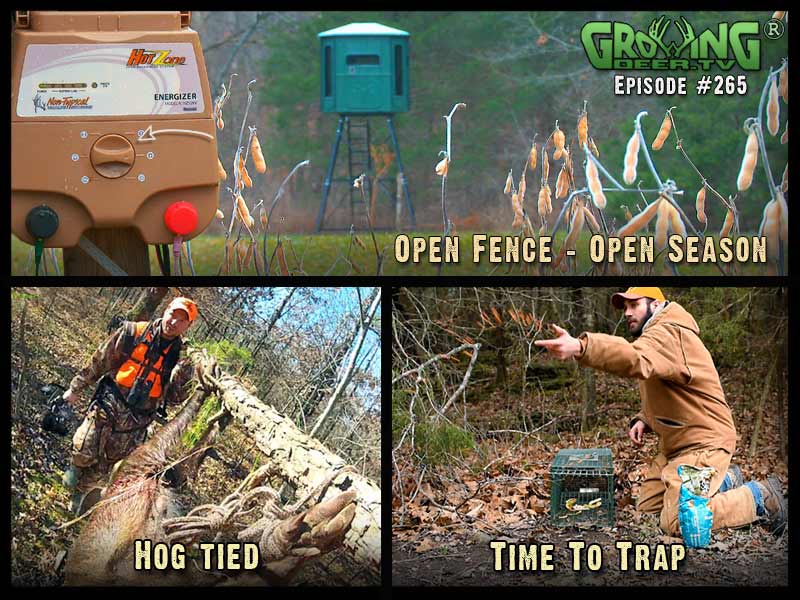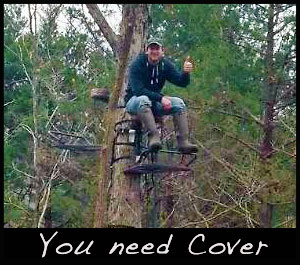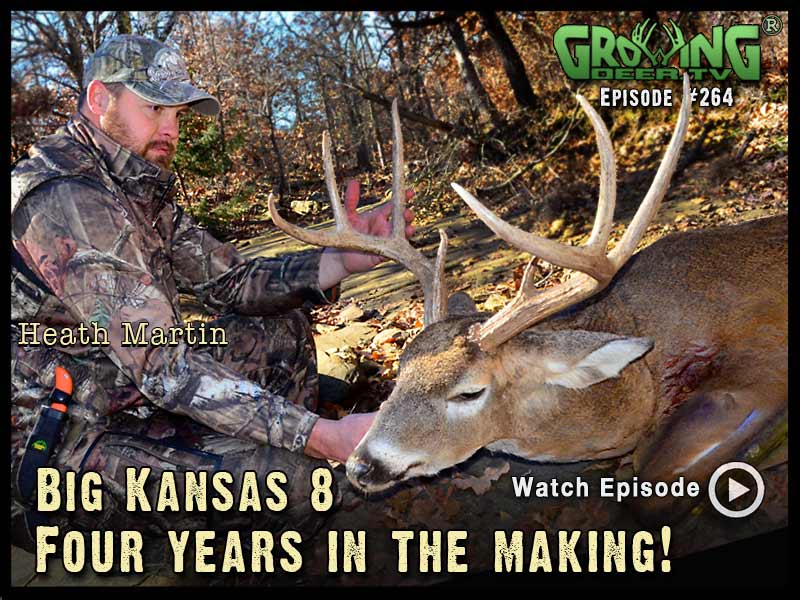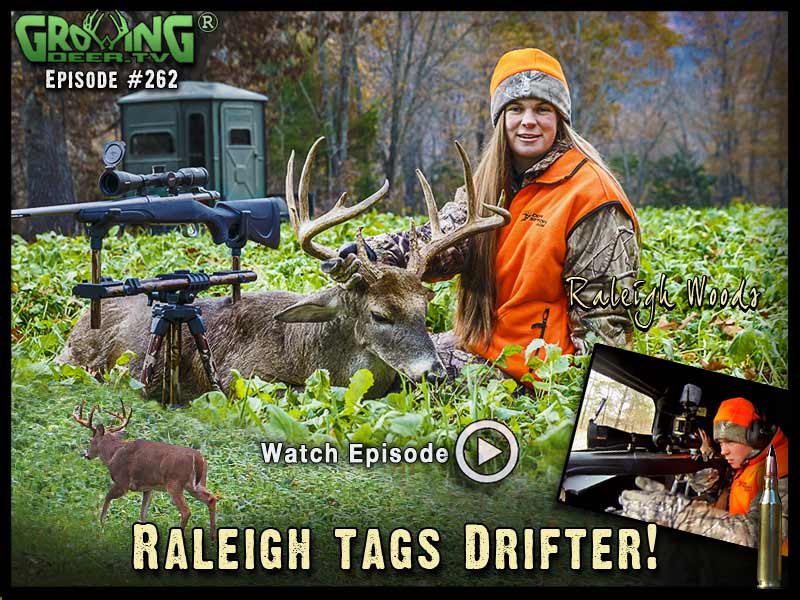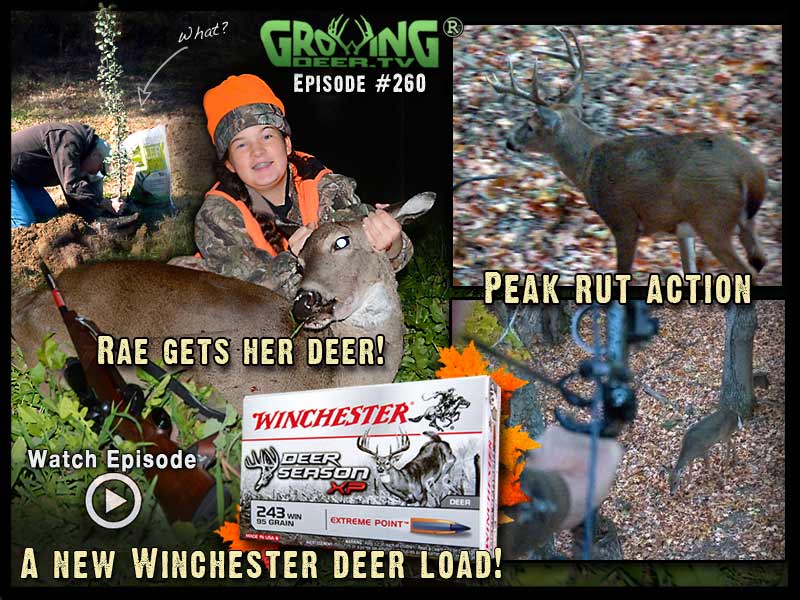Category: Deer Hunting
Kansas 10 Point! – Episode #266
Last Chance Buck
Watch this episode to see how it all comes down to the last afternoon for Pro Staffer Aaron Morgan. He’s hunted all season in Kansas, but so far, no chance at a mature buck. Now it’s the last afternoon before Aaron has to return to work and he has a plan.
Checking the Traps
Grant and the boys put out the first traps of the season. Watch to see what they caught! Plus, Grant shares some how to tips with a Duke DP Coon Trap.
Tip of the Week:
Do you want more deer and turkeys on your property?
Get a couple easy-to-use Duke traps and start removing
predators from your hunting grounds.
Warning: You might need more food plots.
Wild Hogs In Oklahoma – Episode #265
Seth and Chase Go Hunting
Our boys take a road trip to the mountains of Oklahoma. They run into wild horses and wild hogs. One of those gets carried out with them.
The Hot Zone is Open
We protected a plot of Eagle Seed beans all season. Grant and crew finally open the Hot Zone fence. This favorite food is now available for the deer. As prime rut comes to a close, we’ve got late season quality food near a Redneck blind.
It’s The Season
Predator trapping season is here. We love turkey hunting, but for now, we’re gonna be a turkey’s best friend. Act now if you want to save nest sites and poults from ravaging predators. Watch this episode to get you primed and ready for trapping.
It’s getting late. There’s pressure to fill your tag.
Check that your stand site still has concealing cover.
If not, attach more cover, then fill that tag.
Big Kansas 8 – Episode #264
For Heath Martin, the road to harvesting a mature Kansas buck has not been easy. This all changed recently when a group of does worked toward his tree stand and a big, mature 8 pointer was following! Watch this episode to get caught up with the Martins and their 4 state deer season. Plus, what’s next is hard to watch: Imagine conditions are perfect to hunt one of your core hit list bucks. Driving to the stand you see something in the food plot…something no hunter wants to see.
Tip Of The Week: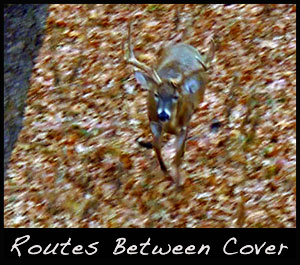
Heath’s Tip For Hunting Now
Set up on travel routes between bedding/cover areas
Bucks will still be cruising for does
The Dwindling Of Two Face
Every whitetail hunter has experienced being unsuccessful and spent the off season wishing he could have changed his tactics and been more successful. However there is a silver lining, if the buck isn’t killed by natural causes or by a neighboring hunter, you will be able to watch his growth change from year to year.
During the 2010 season there was a buck at The Proving Grounds, “Last Lick Big 10.” He was a giant buck for this part of the world. He showed all the signs of being mature, but he lived on a part of the farm where cameras had just started being used so his exact age was unknown. In 2011 “Last Lick Big 10” was back, but slightly smaller than he was the year before.
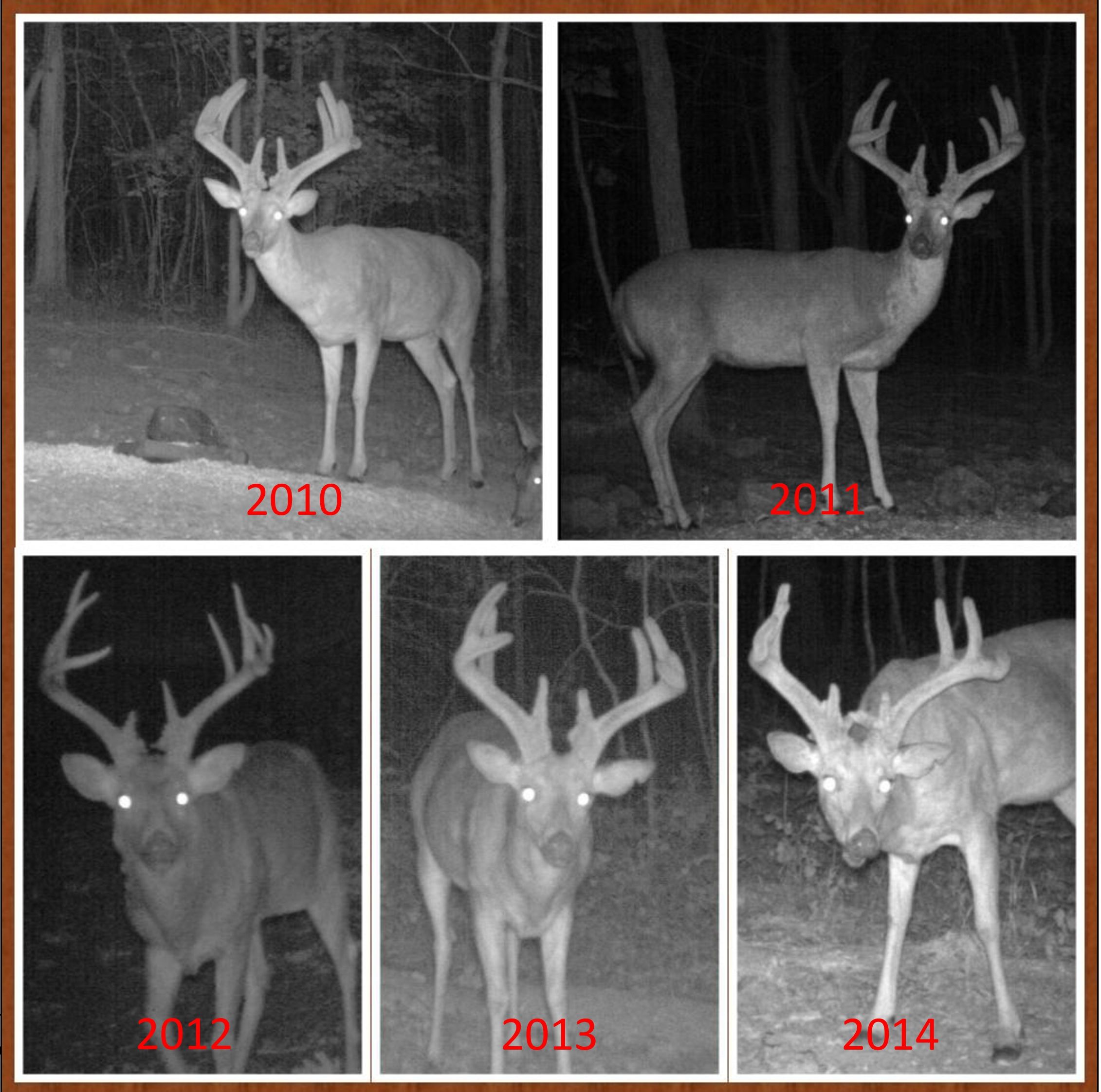
Over the last five years Two Face has lost several inches in antler but gained lots of character!
In 2012 “Last Lick Big 10” disappeared. During the middle of November we had a new buck show up that had a strange looking set of antlers. One side had five points with tines no longer than seven inches, while the other side had four points with tines nearly ten inches long. We joked that if you found his sheds you would believe it to be from different bucks, so we named him “Two Face.”
During the following year of 2013, Two Face showed up on camera as a massive ten point with kickers at the bases of both antlers. He was a cool looking buck, but what made him show more character was his light colored face. His forehead was almost white and his back had scars all over it, most likely from fighting.
During the off season this year I was looking through Reconyx cards and watched Two Face visit a Trophy Rock. He didn’t have antlers but our history is so strong I recognized him even without antlers. After years of running these hills and surviving predators and hunters, Two Face looks as old as the trees we hunt him out of. It was during this time I realized who he was. Two Face had decreased so much in antler size that at first I didn’t realize he is most likely “Last Lick Big 10.” They live in the same area; both have an ear notch in their left ear; and both have very similar antler dimensions. After studying all the photos we’re very confident they’re the same buck. That would make Two Face nine or ten years old!
Watching Two Face over the years has been bittersweet. We’ve lost many battles with him in the game of hunting, but we’ve won by getting to watch such a magnificent buck live his life at The Proving Grounds. Two Face has been a great reminder to me that it’s not always about harvesting a deer but also the pursuit and the memories made along the way.
Daydreaming of Whitetails,
Adam
Creating A Great Late Season Deer Hunt
It’s that time of the year again. The peak of the rut has passed in most parts of the country and as winter knocks at our door, the acorns have been picked through making the deer work harder searching for food. This is when winter food sources become hunting hot spots. Last week Adam shared that our hunting tactic for tagging a hit list buck is to pattern doe fawns, especially those feeding in food plots. Knowing this pattern would occur, we began making a plan this summer for late season hunting.
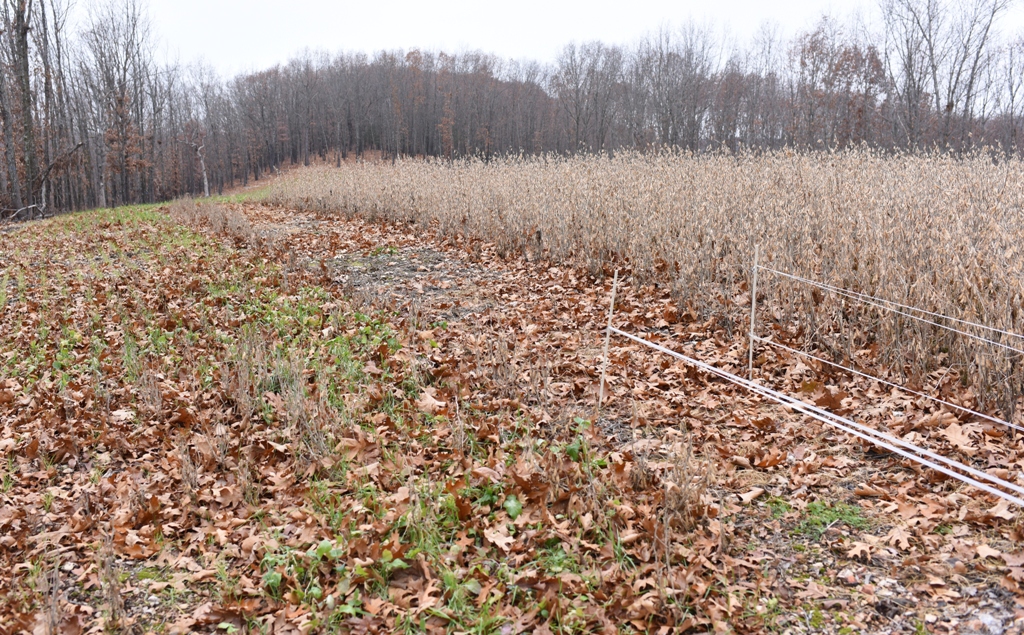
A small plot of standing soybeans opened for hungry deer.
Soon after planting, the GrowingDeer Team placed Hot Zone electric fences around several different portions of soybean plots at The Proving Grounds. The unfenced areas have experienced heavy browse, but the beans inside the fence have remained relatively untouched. This has saved a high quality food source to help the local herd through the winter months. In doing this, we have also created a great late season hunting setup.
We have recently opened small portions of the fencing at these plots, creating funnels. Like most animals deer tend to take the path of least resistance, especially when it comes to getting to the dinner table (this probably applies to us humans as well!). It won’t be long before deer figure out the subtle change and begin to pour into the standing beans. This is exciting for us because these larger fields, that were hard to hunt earlier in the year, now have smaller area for feeding which brings deer within range of our stands.
As we continue to use our Reconyx cameras, we will be watching for patterns of doe fawns that are taking advantage of the now easily accessible food, with the expectations that a mature buck could be right behind her. We look forward to the next few weeks. I hope you find the chance to get into the woods this time of the year and experience a great late season hunt.
Managing whitetails with you,
Daniel Mallette
Two Bucks For The Woods Girls! – Episode #262
When Rae and Grant were checking out Rae’s buck, they heard a rifle shot from on top of the mountain. It was Raleigh’s Winchester .308! Check out what happens when a five year old buck called Drifter trails a doe across the plot where Raleigh was hunting.
Tip of the Week:
In areas with good habitat female fawns may reach 70 lbs during the late season. Those that do often become receptive. Often patterning mature bucks during the late season is as easy as finding where female fawns are feeding. Patterning groups of female fawns during the late season can be a great strategy!
The Second Rut: Strategies To Be Successful
Late November and early December can be a difficult time for deer hunters, but understanding deer biology can help you tag a late season buck!
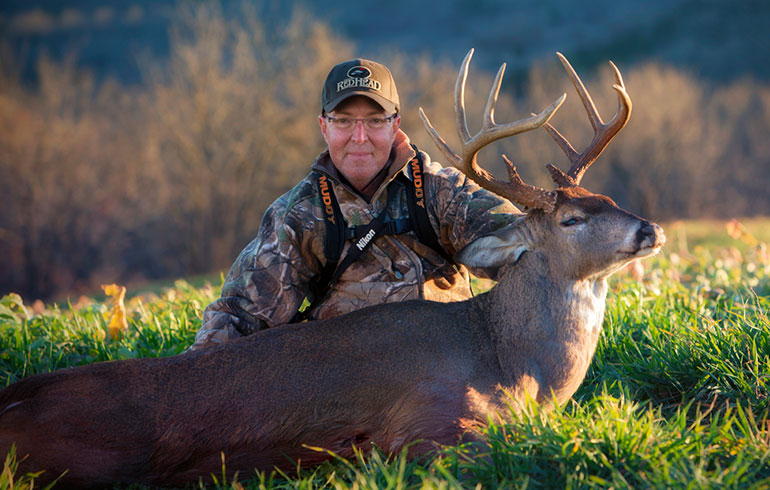
Grant poses with “The Trashman,” a mature buck that was harvested when he was following a receptive doe fawn.
Trying to pattern deer, especially mature bucks during late November and early January is tough. By this time of year the deer have usually felt a high amount of hunting pressure. We know what pressured deer do don’t we? They become nocturnal. Nocturnal deer are very hard to hunt, but lucky for us nocturnal deer will still chase receptive does, even during daylight!
Over the next couple of weeks, doe fawns will be reaching the body weights of approximately 70 pounds. When they reach this weight they will begin puberty and become receptive. Unlike a mature doe who seeks shelter upon becoming receptive, doe fawns go about their normal routine. That routine may consist of bedding in a clear cut during the day or going to a food plot an hour before dark every afternoon. If this is the case, there is a good chance a buck will make an appearance at that food plot during daylight hours.
Game Plan: With our Reconyx cameras placed over most of our food plots on time lapse mode, we will monitor the fields for daylight activity. Next, we’ll search for patterns of doe fawns frequenting the plots. Once we find the fawns, we’ll move in and hope for a mature buck to make his appearance. Grant and I had a great hunt using this same strategy a couple years back as he tagged a nice buck we called “The Trashman.”
Finding the preferred food source during the late season is one thing. Finding the preferred food source with a receptive doe fawn will most likely lead to a very exciting night in the stand. Be sure that you’re not overlooking the doe fawns in your area; they may be the lure that helps you harvest your number one hit list buck.
Daydreaming of Whitetails,
Adam
Deer Season XP – Episode #261
Young Rae spots a buck coming into the food plot. He’s moving fast, but Rae is steely calm on her FieldPod. This will not be good for the buck. Once again, Rae gets to test a brand new Winchester bullet. It’s a special round that’s not even on the market yet, Deer Season XP. The impact results are dramatic. See for yourself. Also this week: Start with steep slopes and acorns, then build a bedding area, then add a couple Muddy stands at key locations. That’s where we’ll find Grant and watch his sweat equity pay off!
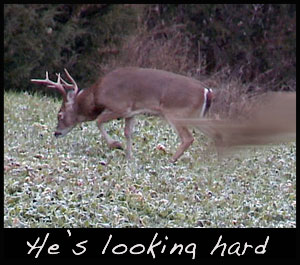 Tip of the Week:
Tip of the Week:
Hunting The Last Days Of Prime Rut
Finding the doe that hasn’t been bred means action for you. Lots of bucks will be scent-checking feeding areas and cover. Hunt cover during mornings, food sources during evenings.
Rut Action – Episode #260
Watch young Rae Woods try out the new Winchester Deer Season XP. Wow, see the results for yourself! Then Grant and the boys head to Kentucky for some peak rut action where Grant gets “on the board” when he launches a deadly Havoc broadhead. Planting a tree plot during the rut? Either Grant’s off his rocker or this makes good sense. You decide.
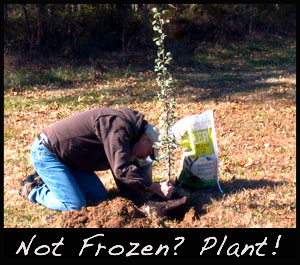 Tip of the Week:
Tip of the Week:
If the ground isn’t frozen, it’s a great time to plant a tree plot! Fruit and nut trees planted in locations that allow hunters to approach, hunt, and exit without alerting deer can be very attractive to deer and great stand locations!
Shifting Deer Hunting Strategies With The Rut
Over the past few weeks scrapes have played an important role in the GrowingDeer.tv Team‘s hunting arsenal. In a recent episode, GDTV #257, we discussed what scrapes are and how to use them for hunting the pre-rut. Even though bucks will continue to use scrapes throughout the season it will be less frequent and with no distinguishable pattern. As the first does enter estrus, bucks begin to focus on does. Scrapes are no longer the primary focus of our hunting.
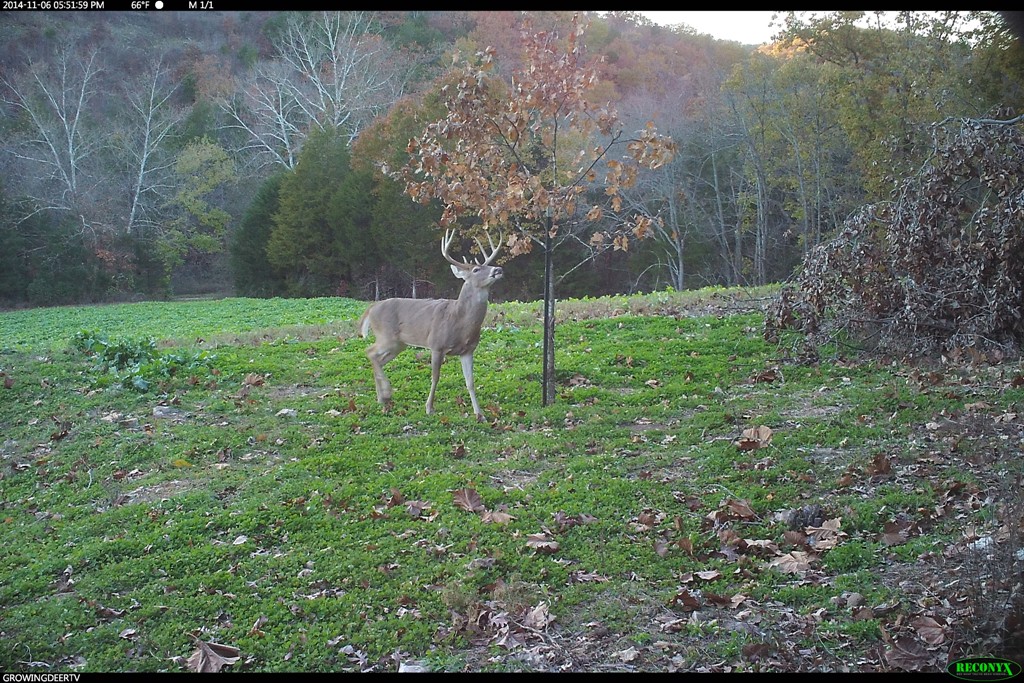
This mock scrape is at the end of a travel corridor. Bucks still check it out but it’s not as active as it was before a high percentage of the mature does in the area became receptive.
Maybe you have already observed does being chased by several small bucks followed by a larger buck. When this occurs, does get tired of constantly being pushed around and will seek out shelter. Time to shift focus and hunt stands that are near or overlooking areas of dense cover, like a thicket or a clear cut overgrown with saplings. The goal is to catch a buck searching for a doe that has or will take refuge in the cover. You can see how Grant put this strategy to use in episode #157.
In addition to hunting cover, our other preference this time of the year is travel corridors. Travel corridors are areas that deer prefer to use as they travel to their destination. These corridors tend to be paths of least resistance for deer and usually allow deer to move in relation to the wind. We know that does will be using these areas and that bucks will follow.
We also know that now is the prime time. As every day passes more does will become receptive. This means bucks will not have to look as hard for a date, and buck movement will decrease. When that happens, it will be time to shift hunting strategies once again!
I hope you get the opportunity to experience this exciting time of the season.
Managing whitetails with you,
Daniel Mallette



